From Runway To Throwaway
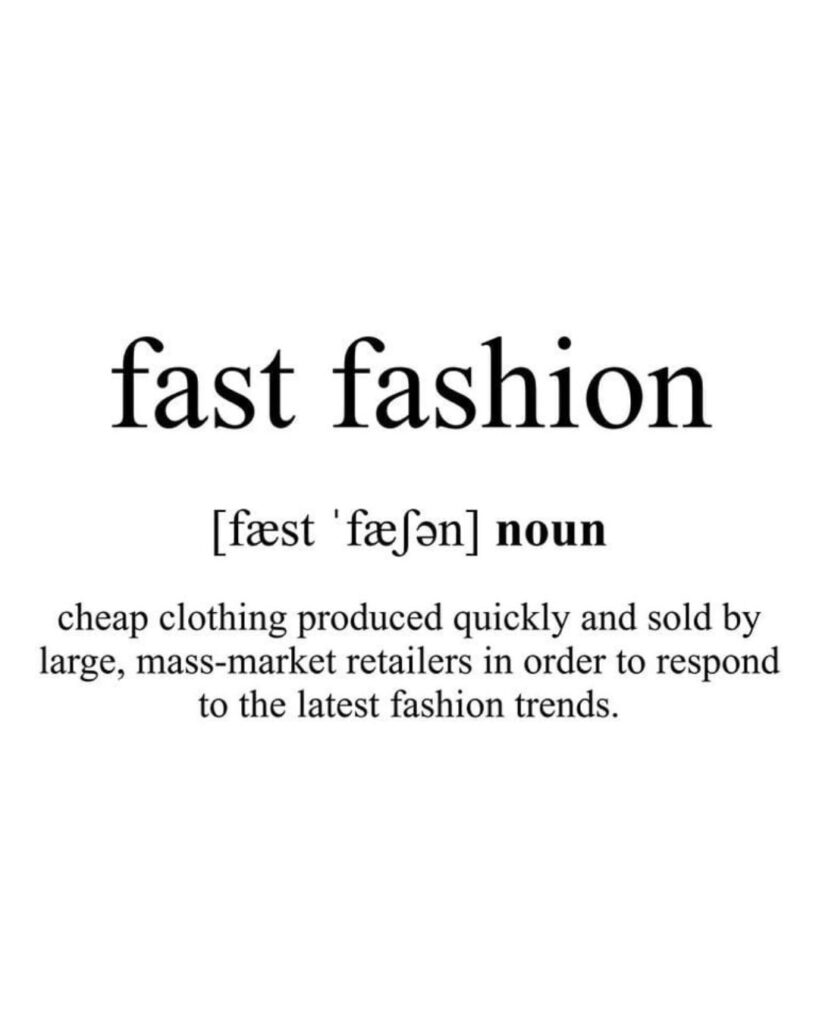
Notice how you can’t define fast fashion without using the words “cheap” and “quickly”?
Maybe, you carry a steel water bottle, and maybe you turn off the lights when you leave the room. You might be carrying paper bags and pickup the garbage on the road. And maybe, just maybe, you do care about your planet BUT do you realise that you shop a lot more than you require? And your closet is overflowing with clothes you no longer wear, not mindful. Half of them don’t fit, others are only suitable for photos, and many are worn on instagram once, so you can’t be an “outfit repeater”, can you?!
According to Raj Patel (author of the History of the world in Seven Cheap Things), “Cheap” is a strategy that mobilises human and natural violence with little to no compensation at all.
Fast fashion is like the fast food of the clothing world—quick, cheap, everywhere and extremely unhealthy. Unhealthy to the planet when multiplied by millions of people.
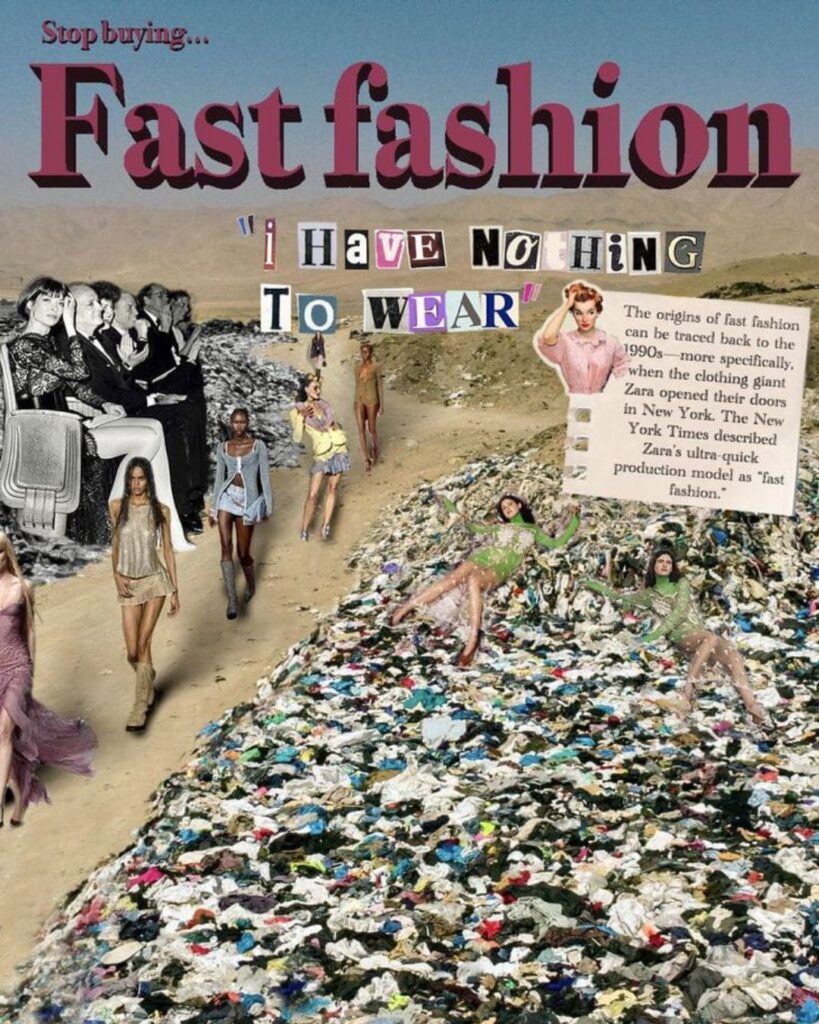
YOU ARE THE REASON FOR A BIGGER PROBLEM
Trigger warning : This article might motivate you to donate your entire wardrobe. But, no seriously you will hate the idea of covering up yourself in cheap clothes. The new shirt you just purchased might get the planet into a lot of trouble. Four kids might have skipped school in order to make that shirt. The more we found out the more we started hating the idea of wearing clothes in general.
Do you ever think about how your relationship with clothing has become toxic and maybe it’s time to break up or maintain some distance? You might feel the need to go back to it, to get validated and maybe you think that’s the only thing that will make your life worthy of living. But it is unhealthy for you to keep chasing that red flag. (You know it, I know it, we all know it)(yes we’re still talking about clothes).
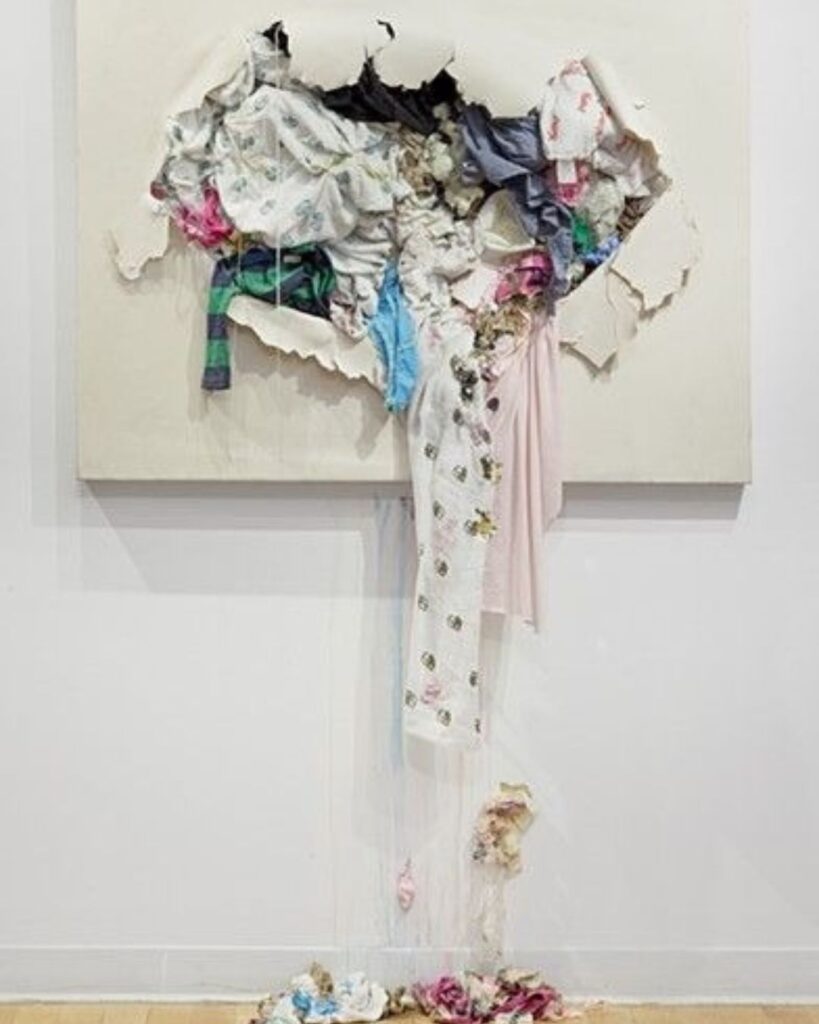
The fashion industry, like any other industries, is in fierce competition with one another. In this era of staying “relevant and trendy” companies often tend to forget the ethical perspective of business.
Look at your closet and think about that top you bought but never wore. Fairtrade International says 80% of fashion industry workers are women. They are paid 20% less than men. Not to mention that they are abused and discriminated against. Feel guilty yet? This inequality adds another layer to the issue of fast fashion, and it contributes to exploitative practices like child labour.
If you’re willing to overlook the exploitation of workers and the damage done to the environment just to purchase a single crop top, it’s high time you reconsidered your priorities.

It is a ticking time bomb waiting to explode our planet
The textile industry is causing significant environmental pollution, you name it, and you will find out that this industry is responsible for that.
According to the Greenpeace Foundation, fashion bigshots of the West dump their waste in small African third world countries in the name of “donations”. Their only source of potable water is getting polluted, thanks to our purchasing patterns. We are oblivious to the deteriorating living conditions of these countries. Every second a truckload of textiles is landfilled or incinerated globally, worsening the waste crisis.
While thrifting seems like a swift solution, if you look at it closely, you’ll realise, it actually is a problem. It is a misunderstanding in itself and is slowly following the footsteps of fast fashion.
Amidst all this chaos is a significant rise in the emergence of a counterculture; popularly known as SLOW FASHION.
You turn 30. And suddenly, you realise, eating junk food everyday is not healthy for your body (read: planet). So, you decide to opt for healthy alternatives in order to avoid yourself from rotting and deteriorating in the near future.
Slow fashion is exactly that.
There is another alternative: Going to the gym i.e, Sustainable fashion. Doing lunges? Sure. It’s a bit of a stretch. But at least you won’t end up with a closet full of bad decisions. It’s like cardio , you‘ll thank yourself later when your wardrobe isn’t gasping for air.
Here, not only are we slowing the process of consumption but also are considering environmentally safe solutions for the same.
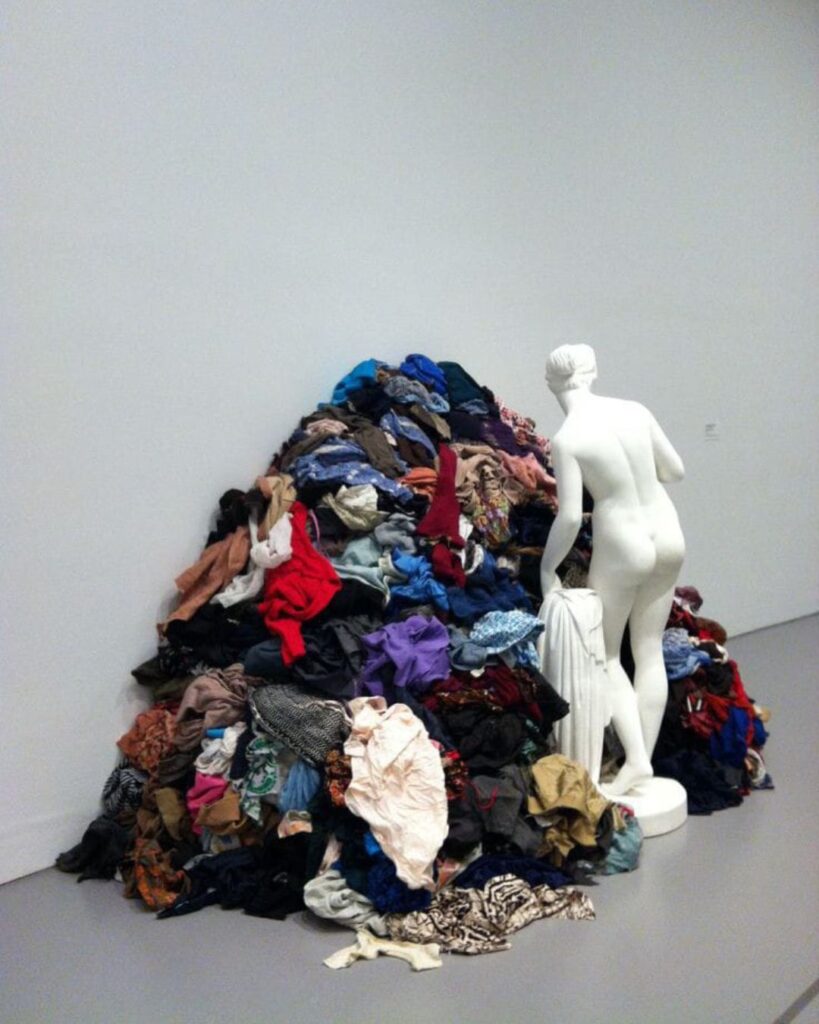
IT IS A TOUGH BATTLE BETWEEN ETHICS AND AESTHETICS. (it’s not that tough, is it?)
Feel Pity, Not Pretty
Think of that one cute outfit you saw in the mall. Pretty, right?
Can you see a 13-year-old child starving and working in hazardous conditions to make that dress FOR you? Not that pretty now, is it?
Remember that T-shirt that you got on sale for Rs.500? That’s still sitting in your wardrobe, untouched? Do you know what it’s actually worth? It might have cost you a dime, but it has cost a kid in Bangladesh his childhood, education, nutrition, LIFE.
Remember? The Rana Plaza Disaster in Bangladesh? It was the first sign of trouble when the whole building crumbled, killing 1100 people and injuring 2500 more.
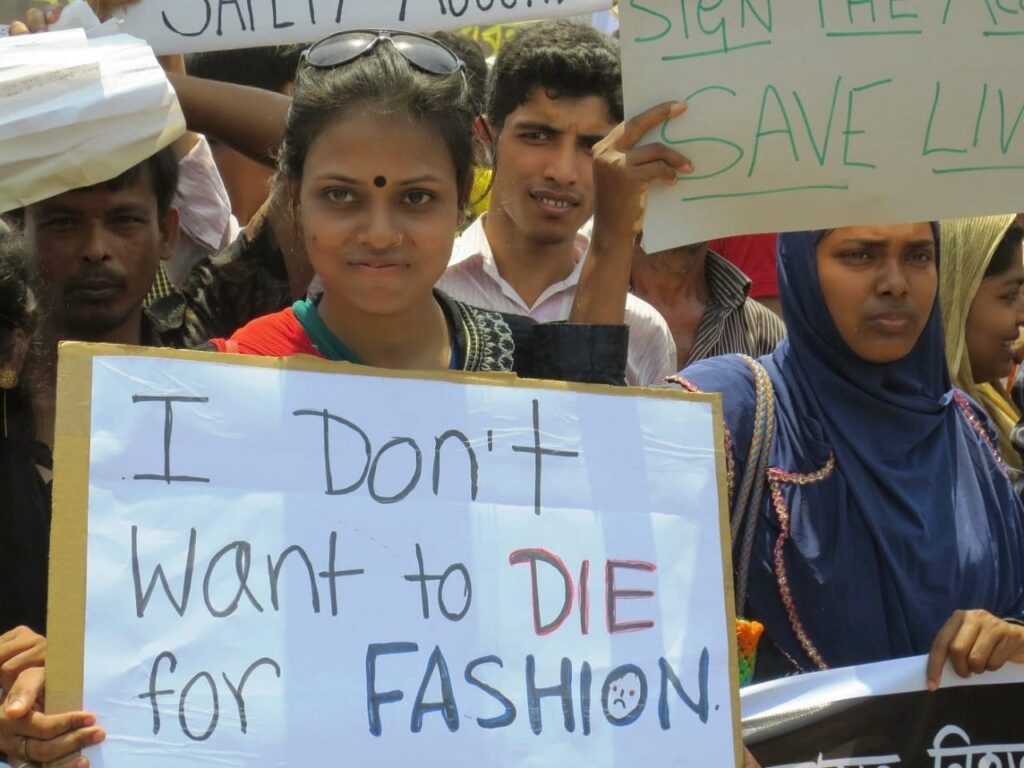
Most of these victims were textile workers, mostly women who worked long hours in dangerous conditions. Like gears in a giant machine, these workers created clothes for fast fashion brands around the world.
According to Taqbir Huda, Amnesty International’s regional researcher for South Asia, despite the evident danger, workers were forced to go into the building and work that day.
For many, it became their grave because of negligence of the authorities for their own greed. Their safety was compromised to meet the production goal. To make profits for big corporations. This tragedy left people outraged , the ugly truth surfaced but nothing really changed, did it?

The Rana Plaza building had housed five garment factories that manufacture clothes for many international clothing brands in Europe and North America
This disaster was more than just a building collapse. It showed how the economy can disregard human life in the never-ending quest of profits.
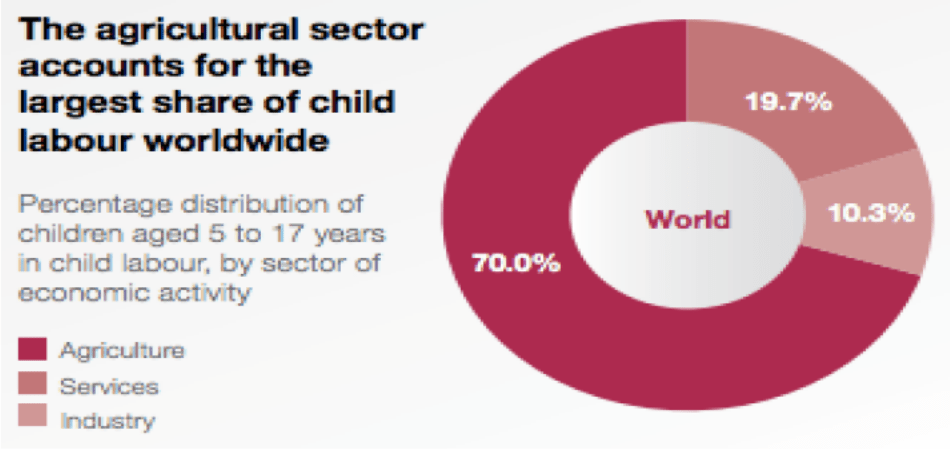
European Commission reports that 70% of child labour around the world work on farms, especially in places like Africa. This can be really dangerous, especially for younger kids. Child labour is still prevalent despite the laws and rules that exist in these countries.
Some kids even work on cotton farms, which can be really harmful. So, when you buy clothes, it’s important to wonder if they were made by kids.
You are so disconnected from the people producing much of what you buy. How do you live with the fact that another woman is being exploited so that you can pay an unreasonably low price for a piece of clothing you probably don’t even need? How do you live with the fact that another woman is working ridiculously long hours and still living in poverty while the profits of her efforts go to a CEO wearing a Balenciaga?

You, as a consumer, haven’t considered the impacts of your purchasing decisions in making these companies so profitable. Translated: a (mostly) Western desire for more and cheaper stuff is directly responsible for trapping women in a cycle of abject poverty. How do you live with that?

According to Bhraghavee Kumar Iyer, Not paying the labourers the minimum wage amount for survival is a problem across all steps of making clothes: cultivation-weaving-designing-manufacturing-distribution.
India dropped a regulation mandating manufacturers to pay their workers a minimum salary (minimum wages act, 1948). So, Fashion Conglomerates said WE ARE OUT! (faster than Namita Thapar) and went to manufacture in third-world countries such as the Philippines, Jordan, Egypt, Indonesia, and others (Glad they don’t prefer us anymore).
And let me tell you that she is an Assistant professor and campus co-ordinator at National Institute Of Fashion Technology, so if anyone’s opinion matters, it’s hers.
Your Favourite Clothes Might Be Doing More Harm Than You Think
On an average, the human brain has approximately 60,000 thoughts a day. Out of which, 15,000 times you might be thinking about buying new clothes. Do you ever ONCE think about its impact on the environment? The planet? The people?
Polyester, those cheap, stretchy fabrics, release tiny plastic bits when you wash them, polluting our oceans. Contrary to popular belief, cotton, even though seems natural, is often grown with tons of pesticides and sometimes involves forced labour. Leather? Forget about it. Cows need huge spaces to graze, which means cutting down forests and polluting fresh water bodies. Fast fashion exploits the environment right from procuring of the raw material to disposal of scraps of the byproduct.
Think of synthetic clothes like guests who overstay their welcome. When we buy these materials, we’re inviting them into our lives, and when we’re done with them, they don’t simply leave. Instead, they linger, occupying spaces in landfills, leaching chemicals into the soil and waterways, or even breaking down into microplastics that infiltrate our ecosystems.
Ellen MacArthur Foundation alleges that the fashion industry is thirsty – using almost a crazy 93 billion cubic metres of water every year! That’s like 4% of all the freshwater we have on Earth. And it’s not just about water; this industry is also pumping out a ton of pollution – around 2-4% of all global emissions. If we keep going like this, things could get even worse, with emissions rising by 30% by 2030. Making synthetic fibres uses as much oil as all of Spain in a year! And polyester makes as much pollution as almost 200 coal-fired power plants. That’s a major wake-up call!
We all have that one chair in our room, where we dump all our clothes, and that chair exists somewhere in the world as well.

The Great Pacific Garbage Patch is a collection of marine debris in the North Pacific Ocean. Also known as the Pacific trash vortex, the garbage patch is actually two distinct collections of debris bounded by the massive North Pacific Subtropical Gyre.
National Geographic defines The Great Pacific Patch (GPP) as one of the most significant environmental challenges faced by the world today, and yet, it remains largely invisible to the naked eye. This vast collection of marine debris, mostly consisting of plastic, is not a singular floating island as some might imagine, but rather a dispersed, swirling mass of trash spanning an area larger than India. The GPP is situated in the North Pacific Ocean, between Hawaii and California, and has become the most infamous example of humanity’s plastic pollution crisis.
It’s time we Marie Kondo’ and clear that chair.
That’s Not Fur-Tastic!
Elitists have been glorifying hanging dead animals in the name of prestige. And it’s no secret that their way of living was followed by the masses. So people tend to buy cheap knock-offs that have real animal fur. What they didn’t realise was that poor animals who had no say in the matter were being slaughtered for their “illusion of class.”
Rupali Gaikwad, Head of Environmental Science Fergusson College, claims that, We’re already in a wildlife crisis, but that doesn’t stop us from destroying everything.
Jessica Davis from Harper’s Bazaar says that there’s no way to transform a wild animal into a coat, bag or shoe without causing immense suffering.

According to PETA, around 3,000 silkworms are killed to make 450 grams of silk. Which means that billions, if not trillions, of them are killed for this, every year.
Over 100 million animals are killed each year for the global fur trade, including mink, foxes, raccoons, and rabbits. Animals on fur farms are sometimes skinned alive or suffer painful deaths like electrocution or gassing.
The leather industry kills over 1 billion animals each year – PETA
Leather, whether it’s from animals or synthetic materials, isn’t exactly eco-friendly. Making animal leather hurts animals, forests, and water. And even ‘vegan’ leather can be bad for the environment because of the chemicals used to process it.
The most worrying aspect of Animal welfare in fashion reports is the overall lack of transparency around the manufacture of animal-derived materials. A 2017 investigation by The Humane Society International found real fur being sold as faux fur by fast fashion brands, misleading consumers who thought they were making cruelty-free purchases.
The report revealed that only 50% of brands reported their usage of some animal-derived materials, showing a widespread lack of transparency across the sector. Some materials like wool are commonly assumed to be ‘cruelty-free’ by consumers, but with cruel practices like mulesing still occurring overseas, it is possible for brands to buy cruel wool and bury this fact under ‘sustainable’ misinformation and a lengthy manufacturing chain.
But Isn’t That Like, Illegal?
Sometimes being a rebel is actually about following the decree. Certain regulations are there to protect you from yourself. Labour Regulation and Abolition Act 1970. This Act protects women employed by or through a contractor, with or without the knowledge of the principal employer which is known as “contract labour”.
A set of guidelines created by the government for the welfare of the people in the textile industry. This is done to ensure that discrimination and harm this industry causes stays off trend and outdated!
Fast fashion has broken n number of laws. Even when people report them, nothing really happens.
The fast fashion industry is like the Britain of industries. under the disguise of ‘donation’, they dump their waste in third world african countries, polluting their limited water resources and leaving them with nothing.
The Ministry of consumer affairs states the :
centre consumer Protection Authority (CCPA) under the section 18 of consumer protection act issuing guidelines for prevention and regulation of greenwashing.
It lays down guidelines for making environmental claims and avoids misleading advertisements to help the consumers. Smera Sarnath Sonker in her article with Bar and bench states that the legislation which majorly governs the fashion industry is the Contract Knowledge of the principal employer which is known as “contract labour” states.
There are an estimated 168 million to 200 million child Labourers working around the world today. In spite of global, national and sector initiatives to abolish child Labour, almost eleven per cent of the global child Population is a child labourer, according to figures from The International Labour Organization (ILO).
Get It NOW, Or Regret It!!
Every year, Runway shows used to have two collections for four seasons: spring-summer and fall-winter. Now,, there are 52 micro-seasons yearly, with new styles coming up every week, thanks to fast fashion.

Ruthless efficiency is a key factor in fast fashion and trends encourage the same. ‘I love what you’re wearing’ or ‘What is she even wearing?’ was once reserved for public figures, Instagram and the pressure to always look ‘oh so chic!’ have led to a surge in consumption as we fall prey to trends.
Social media creates a system where everyone feels the pressure to dress in preparation to be photographed (also an approach previously reserved for celebrities) buying into the idea that you can’t possibly re-wear something you have been previously photographed in. Unfortunately, our brains are wired to enjoy the entire process tremendously.
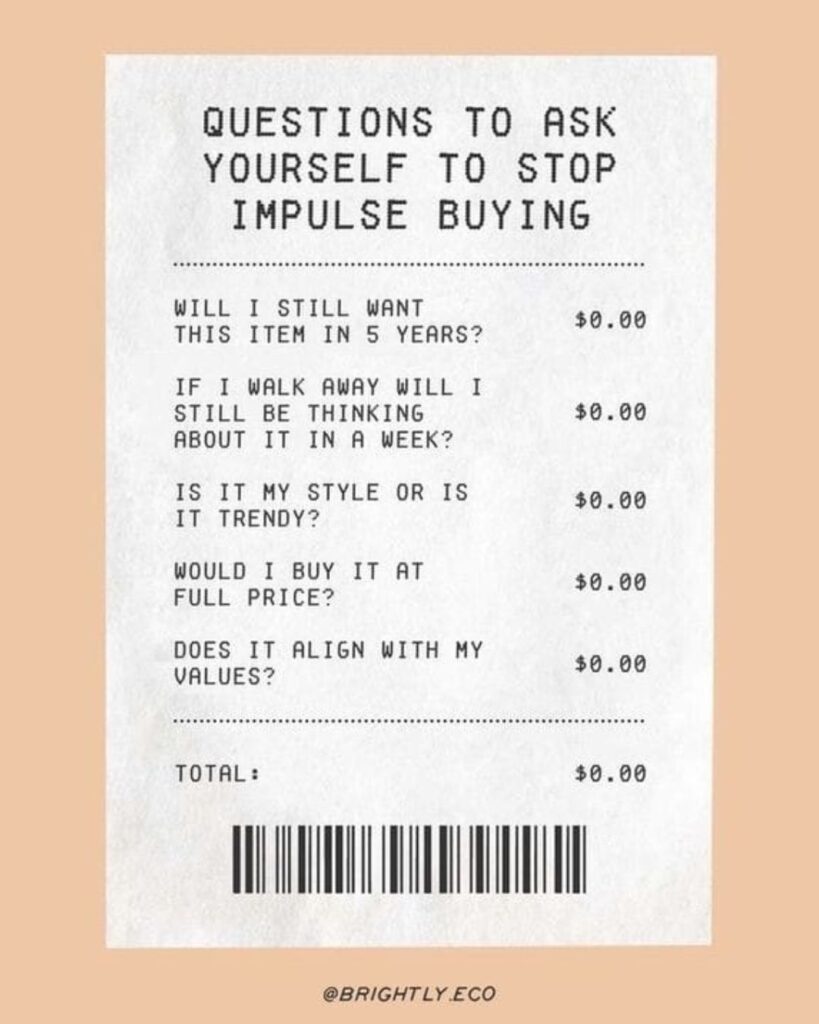
What used to pique my interest now makes me nauseous and not just because everyone is wearing polyester on the gram but also because they are talking about sustainability while doing the same.
It’s like a vicious cycle: brands keep churning out cheap clothes to meet demand, and we keep buying them.
It’s time to slow down and think twice before hitting that “add to cart” button. Maybe it’s better to invest in a few quality pieces that’ll last longer.
A new report from Redseer Strategy Consultants stated:
“Young men choosing fast fashion in the financial year 2024 wore oversized t-shirts, graphic tees, printed shirts and cargo pants. The next major fashion trend for them is likely to be co-ord sets and all-time jackets. Millennial and GenZ women purchased dresses, co-ords and wide-legged trousers in FY24 with shapewear expected to be the next big thing.”
Kushal Bhatnagar, associate partner, Redseer Strategy Consultants, said currently fast fashion is the fashion industry’s growth lever. “Other than global brands like Zara and H&M, India’s fast fashion segment has got a big boost from homegrown Zudio from the Tata group. A clutch of online-first brands like Newme, Urbanic and Snitch, too, have risen fast,” Bhatnagar said in a Hindustan Times article.
Confessions Of A Shopaholic
@ratnapriyaspeaks
I need to come clean, my closet is overflowing. I shop a lot—probably more than I should. I dip into the fashion pool at least three times a week, and I’ve come to call it Retail Therapy. The thrill of wearing something new is addictive, and I rarely ever repeat an outfit.
That being said, I’m not exactly feeding into the big fast fashion giants like H&M or Zara. I try to be mindful, but I can’t pretend I’ve got it all figured out. One thing I’m really into, though, is upcycling. I love taking old pieces and turning them into something fresh and cool, giving new life to what others might throw away.

For me, shopping = happiness.
But it’s impossible to ignore how much social media plays a part in all of this. Just like with so many global issues, platforms like Instagram and TikTok have added fuel to the fast fashion fire. With hashtags like #OOTD (Outfit of the Day), #GRWM (Get Ready With Me), #ThriftFreaks, and #FitChecks blowing up, there’s constant pressure to always have a new look. Social media really does shape not only what we wear, but also how we wear it.
Remember when clothes were made just for you?
Back in the day, people would go to their darzee and get custom-made outfits. It was all about personal style and fit. But then came the fast fashion revolution!
Suddenly, everyone was buying ready-made clothes. It was a big change for older generations who were used to the slow and personal process of tailoring. Brands like Zara and H&M popped up in cities, and before you knew it, we could have the latest trends in our closets in no time.
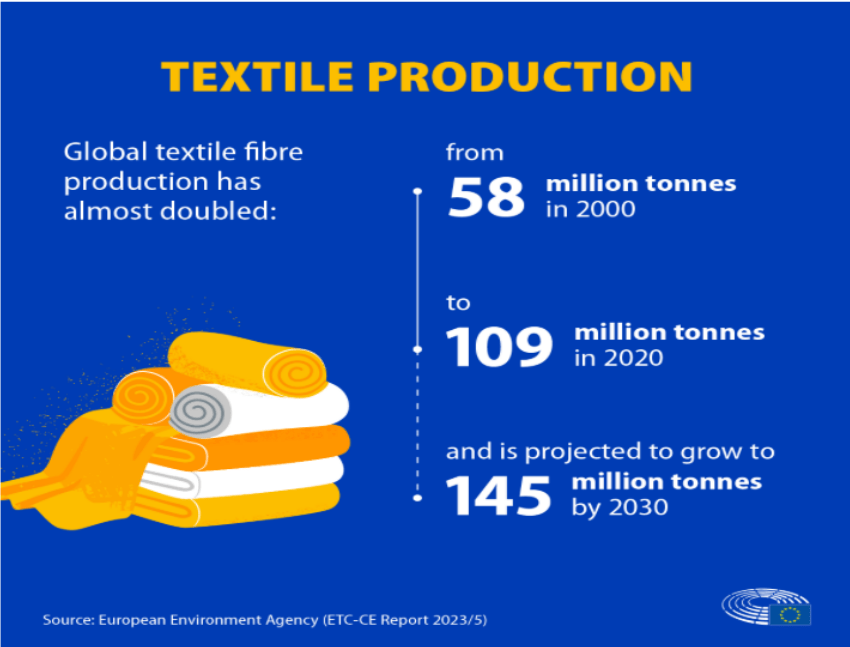
It was like magic! Seeing the clothes we saw on TV and in magazines available for purchase was mind-blowing. And don’t even get me started on apps like Meesho where you can find cheap knockoffs of designer brands.
Buying This Is The Secret To Happiness! And Also This. And This…
We are a society that likes to shop. Social media made it even worse. People could instantly see what others were wearing and copy the look for a fraction of the price.
And let’s talk about the waste. We’re buying way more clothes now than ever before, and most end up in landfills.
According to a John Hopkin University’s Newsletter, the average garment is worn only 7 times before it is thrown away. Over 50% of fast fashion items are thrown away within a year of their purchase.
Just by wearing your clothes 9 months longer, it can reduce your carbon footprint for that garment by 30%.
According to NBC TV, if everyone bought one used item this year, instead of new, it could save nearly six pounds of co2 emissions. That’s equivalent to removing half a million cars off the road for a year.
The fashion industry is a $2.4 trillion goldmine, but its glittering surface hides a $500 billion pitfall of wasted resources, states The UN Environment Programme.
As per Statista, In 2019, the industry was valued globally at 36 billion USD and is estimated to reach 43 billion USD by 2029 (just like your parents expectation, that were high, and just keep getting higher)
Many brands come up with various styles daily, that is 1.5 million designs by a brand per day. Fast fashion is not demanded by the consumers rather imposed on them in the name “This is in!”
Fast fashion brands like Shein make clothes so cheap they fall apart quickly, adding to the problem. According to a report from the European Union, on an average, a European throws away almost 11 kgs of clothes every year! Most of it gets burned or dumped, and the rest is shipped off to other countries.
As well-intentioned as we are, donations alone don’t solve the problem of overconsumption. You might assume that your donated clothes are going directly to people in need. Unfortunately, that’s often not the case. We donate far more clothing than anyone actually needs, as we buy far more than we should.
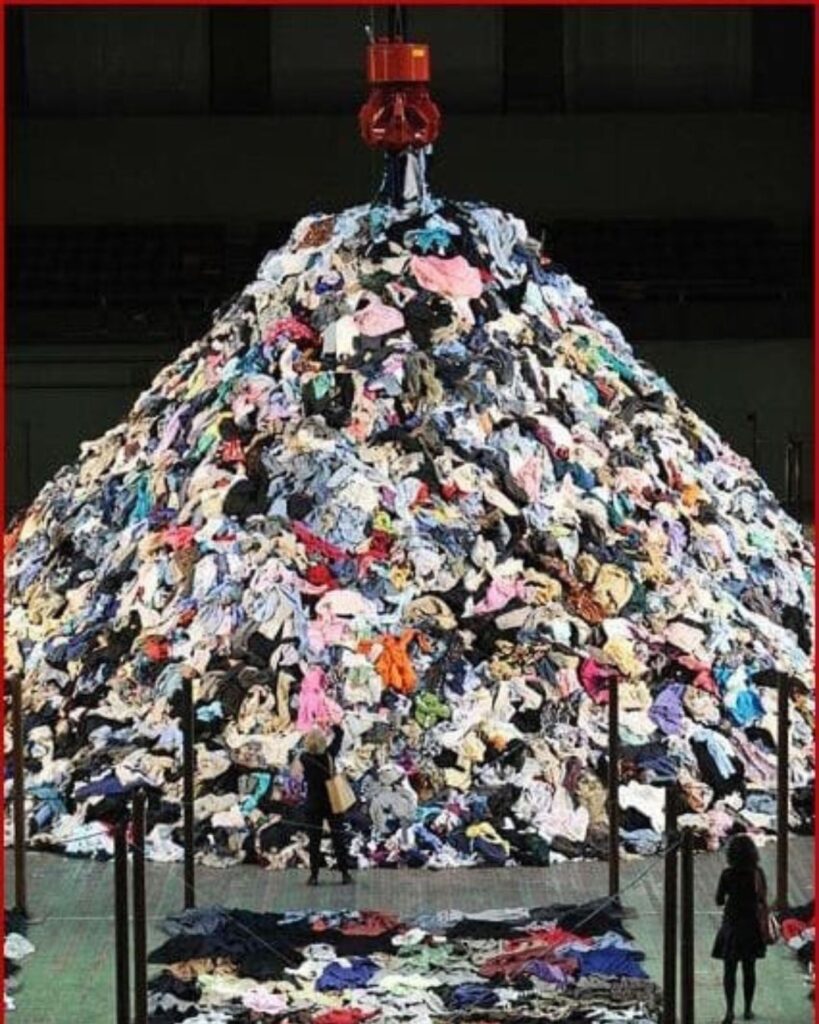
Running a donation centre is no easy task. Non – profit Organisations like Goodwill India receive TON of clothes as donations. Volunteers sort, wash, and sell these items at incredibly low prices. The profits fund important initiatives like education for deaf and dumb students, wedding gifts for girls, and even school meals, says a staff member from the Karve Nagar Branch of Goodwill India. They rely entirely on donations and volunteer work, as the government offers no support. In fact, Goodwill India holds a Guinness World Record for the largest collection of clothes for recycling and donation.

Thrifting has become Fast fashion.
“Wow, I love your top!” is followed closely by, “Thanks! Can you believe I thrifted that?
Well, No Sharon buying clothes from Sarojini is not thrifting!
Thrifting is purchasing second hand clothes. It extends the life of garments, and reduces the demand for production. This is critical considering 85% of all textiles end up in landfills each year, according to the Environmental Protection Agency.
Thrifting is almost like a treasure hunt. It’s a great way to find unique and vintage items. Plus, it makes you feel like you are better than the ones filling the pockets of fast fashion giants. But can we see the pattern?
People often confuse thrifting with fast fashion as both offer affordable clothing. But, their impact is vastly different, especially in terms of sustainability.
In contrast, fast fashion thrives on the quick turnover of cheaply made garments. Almost 100 billion items of clothing are produced globally each year, which severely contributes to the waste.
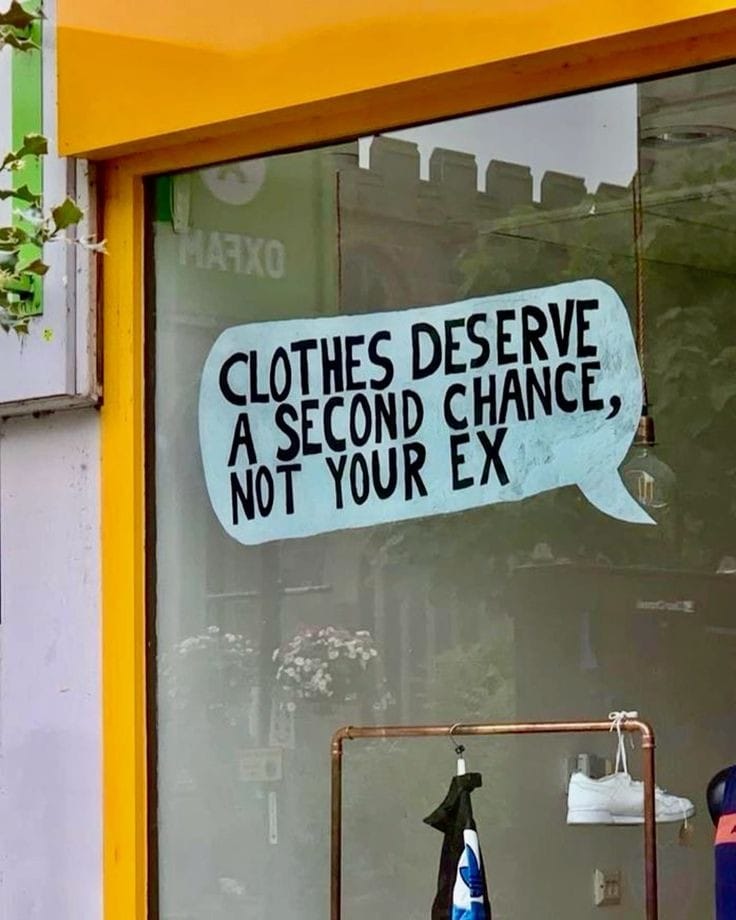
Understanding the difference is key: despite offering similar price points, thrifting supports reuse and reduces waste, while fast fashion promotes overconsumption and wastefulness.
Fashion, But make it SLOW
Slow fashion is like building a healthy relationship with your clothes. It produces clothes that are good for the planet and fairly made. It’s being mindful, and curating collections based on quality finishes, versus pumping out large quantities of trendy clothing.
Jennfer Walderdorff, sustainable fashion consultant and author of Look @ the Labels, says slow fashion is higher quality fabrics, they’re paying staff fairly, they’re not flying things from A to B. Everything is more considered compared to fast fashion, which is more fleeting, micro-trends.”

It encourages thrifting and recycling. Practising slow fashion helps us be a little kinder to the Earth.
Alana James states,“It’s about being considerate in your purchasing and considering the impact those garments have on the world.”
It’s about dressing with purpose and caring about where your clothes come from. By choosing quality, sustainable pieces and supporting local makers, you’re making a big difference. So, ditch the fast fashion and embrace slow fashion. Your wallet, the planet, and I will thank you!
India As The Og Sustainable Fashion Icon
As the saying goes “hamare zamane mein…” Our Grandparents and parents had to buy fabric, design the fit, and go to a “darzee” to get a new dress. The concept of buying a new attire instantly took them by surprise.
India has a rich textile culture. But remember our khadi movement? It made us one of the first countries to preach sustainable fashion.
Khadi embodies the spirit of sustainability, from its production process to its durability. It’s like a living organism, breathing life into communities and preserving age-old traditions.

Its timeless elegance and versatility make it a coveted choice for fashion-conscious individuals. From classic kurtas and sarees to contemporary dresses and accessories, Khadi can be adapted to suit various styles and occasions. It’s like a chameleon, blending seamlessly into different fashion landscapes while retaining its unique identity. It’s a reminder that sustainability and style can go hand-in-hand, creating a fashion revolution that is both ethical and aesthetically pleasing.
Remember that dialogue that went viral on social media;
Lizzy McGuire, You are an outfit repeater ‘Well maybe I am; but you are an outfit rememberer, which is just as pathetic!!
Say it louder for the people in the back!
The mania fashion has brought onto us isn’t new. Every day is a new day and every day is a new trend. All to go back to old trends when we exhaust the new ones. With the gallore of clothes in the wardrobe we end up saying I don’t have any clothes to wear. Who are we kidding? Do we not know that Green is the new black?

It’s high time, we all abide by it.
Even the most oblivious people couldn’t help but notice the new buzzword, Sustainable fashion.
Let’s consider, WHY ?
Making a single t-shirt in your wardrobe requires 2,700 litres of fresh water, which is how much water a human drinks in 2.4 years. Around 7 kgs of carbon dioxide is released which a tree might take months or years to absorb, says a report by the University of Waterloo.. Dyeing the clothes too requires enormous amounts of water. Let alone the manufacturing waste and chemical pollution that goes on. Now imagine you having a few more shirts in all those different colours. And don’t you have different dresses of different materials for different occasions in your wardrobe? Now consider the total number of clothes in your house and in your friends’ house and now in the ENTIRE country.
Scared right?
So what can you do?
The clothes we already own are the ones we should begin with. We already OWN them.
Everyone talks about reuse, reduce, recycle, but the most important r is refuse. Don’t buy everything that looks cute. Ask yourself if you really need it. And If you still want to wear new things just borrow/lend or even play wardrobe swap with your friends.

RE-wear, RE-style, RE-use.
Davis suggests 3 ways in which we can practise sustainable fashion:
Buy second hand! – While there is no shame in stealing your sister’s used clothes because her fashion speaks to you, there isn’t really a shame in using hand me down clothes or second hand clothes at all.
Heard about Cloop? Cut the loop. Stop participating in fast fashion yourself. It’s easy whenever you go back to mindlessly adding a new item to the cart, recollect the data that just scared you!
Vegan fashion: Did you know that clothes can be made with bamboo, hemp, soybean fibre, tencel, and banana wool?
Mother’s Quilt is the MOTHER of all sustainable fashion. They’re taking old sarees and turning them into warm quilts. It’s like giving these fabrics a second life, you know? And the best part? They’re supporting rural women and keeping traditional crafts alive.
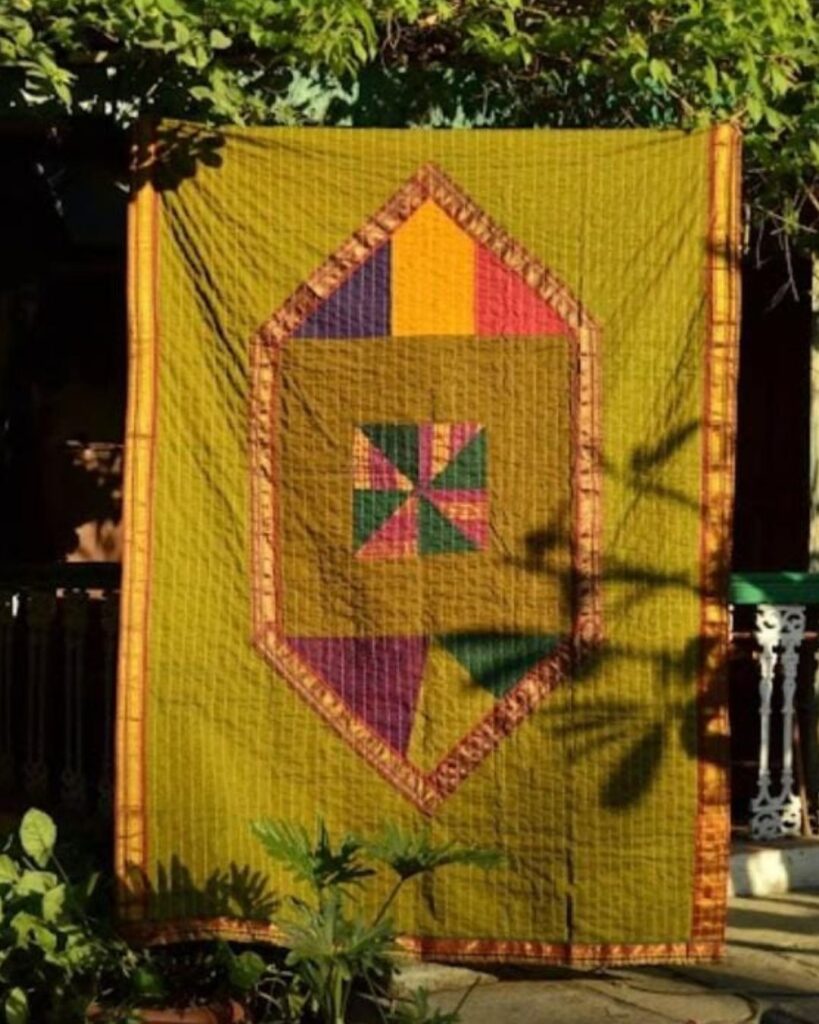
Neeraj Borate, the founder of Mother’s Quilt, found a fault in the system. “There were inadequate market ecosystems, no market linkages, a lack of economic incentives, increased migration, and a lack of support”. This inspired him to start his own brand.
Neeraj wanted to make an impact on the world. Fast fashion products weren’t sustainable, and sustainability couldn’t be affordable.
He said, “Well, it’s a lifestyle choice. With increasing awareness, people do prefer quality. Upcycling one quilt supports three days of livelihood for a family of five. It also saves more than 25 kg of greenhouse gases, saves textile waste from polluting the soil, saves 25,000 litres of groundwater, and supports sustainable development, which is a global agenda right now.”
There are more companies working on a global scale; finding new and eco-friendly alternatives to produce fabric in an ethical manner.
Aarav Chavda, the founder of Inversa, invented a process that transforms lionfish skin and Burmese pythons’ scales into a supple, attractive leather.
Julia Marsh founded Sway, a company that makes a seaweed-based plastic used in delivery materials by large companies.
Uyen Tran, founder of TômTex uses chitin, a natural polymer that can be extracted from shrimp shells — a regenerative, no-waste product that can be ethically sourced from the Vietnamese seafood industry. Tran’s company also produces a second fabric derived from chitin found in mushrooms, a frequent favourite source of sustainable fabric innovators because of its quick growth and low environmental impact.
The Japanese company Spiber, one of the more successful biotech companies working in fabric development, mass production of its plant-based, spider-silk-inspired fibres.
Sooo… What Now???
At a lecture at the NorthEastern University, historian Ramchandra Guha said something along the lines of “India is too poor to be environmentally rich”. On the contrary, Gaikwad believes that, “India is the only country that’s at least trying.”
On the surface it might seem like India is not keeping the environment into consideration. But if you truly know Indian culture and India’s ethics, we have a tradition of passing down clothes from siblings to cousins. We tend to use a cloth till its expiry; Indian moms literally make a pocha (mop) out of old tshirts.
We don’t really look at it logically, we Indians look at it with a very emotional point of view. It’s not about money, it’s about value. Value for money, people, practices, our planet.
“It’s not like they have a choice anyway”, says Gaikwad. “It’s refreshing to see the younger generation is more mindful as they have been taught all this in school. Because if they stop caring they have no future left”, she added.
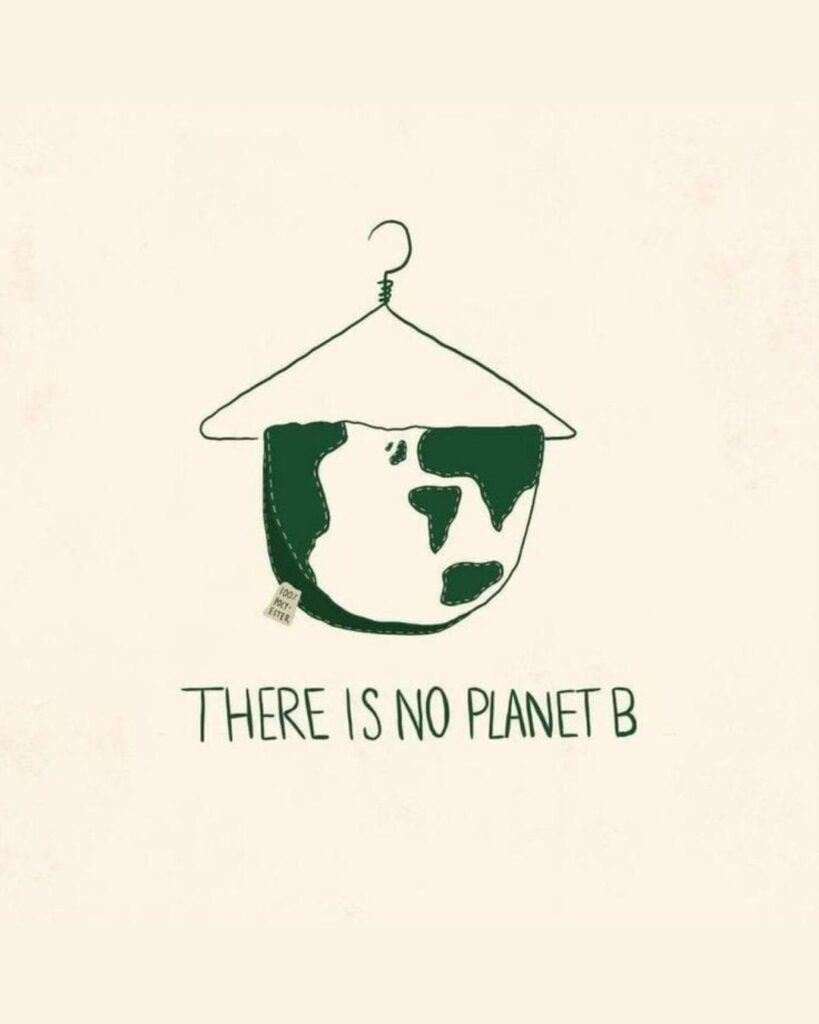
It’s time we make tradition the trend, and trends should become trade.
“Sustainable fashion needs to be affordable in India. People are experimenting with organic fabrics, but it’s still a small thing. The sustainable fashion brands are not part of the supply chain scene yet, they have what it takes. They just need to be a little more accessible than they are” says Ashlesha Deshpande (working on PhD in Sustainable Fashion).
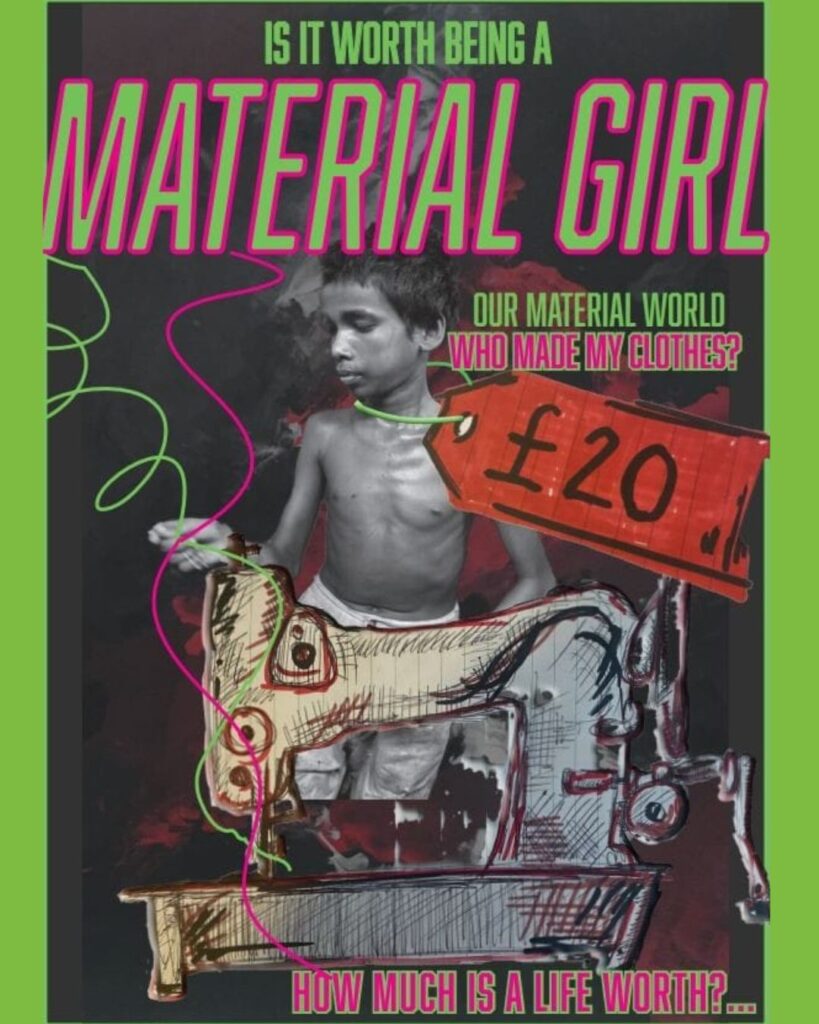
The irony is striking: we shift from using natural, biodegradable materials to synthetics, and in doing so, we inadvertently damage the very soil that we rely on for food. It’s like throwing a wrench into the machine that feeds us.
What began as a convenience-driven choice—synthetics are cheaper to produce, durable, and versatile—has turned into a long-term environmental dilemma. Each wash of a polyester garment releases tiny plastic fibres into water bodies, much like a trickle of pollutants that quietly accumulates over time. These microplastics have now found their way into oceans, rivers, and even the food chain, affecting marine life and, eventually, us. It’s a slow-moving catastrophe that’s easy to overlook, but one that’s difficult to reverse.
Every step we take in our modern footwear, made from synthetic materials, leaves behind a footprint that the earth cannot erase. We need to rethink our approach to both consumption and waste, ensuring that our convenience today doesn’t result in a barren tomorrow.
So the next time you’re tempted to buy a piece of clothing, think twice (or more times) about its implication on the world; and scratch that shopping itch of yours with a sustainable choice.
Thanks for reading, fr! Share if you like it enough. Follow us on Instagram & LinkedIn for more.
Articulated By Priya Banshelkikar, Anjor Diwate, Shravani Bagade and Priyanshi Khrawade, 3rd year Students at Media and communication, Fergusson College.



What you’ve written here feels timeless — like something that will resonate for years to come.
What’s up, every time i used to check web site posts here in the early hours in the dawn, as i like to gain knowledge of more
and more.
Stop by my blog; spanish special characters copy paste
I always used to study paragraph in news papers but now
as I am a user of internet therefore from now I am
using net for posts, thanks to web.